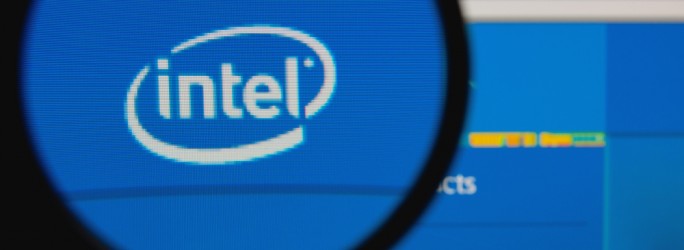Moore’s Law worry as Intel changes chip upgrade strategy


Intel has quietly revealed a change in its microprocessor development strategy as the theoretical limit to what can be achieved with silicon and copper-based CPUs fast approaches.
The chip giant quietly included the change in its annual financial statement, and it indicates the Moore’s Law approach that has driven the tech industry for the past 40 years may need to be revised.
Moore’s Law refers to the observation made by Intel co-founder Gordon Moore in 1965 which noted that as the number of components in integrated circuits was doubling every 12 months or so, each generation will bring with it double the number of transistors.
But for years now experts have been concerned that the computational capability at our disposal is increasingly limited by power requirements and the constraints on the ability to dissipate heat.
Intel termed its old development strategy as “tick-tock” for its year-by-year cycle. The idea was that development was classified as a “tick” where an existing processor design would be migrated to a new manufacturing process. The “tock” meanwhile is where an upgraded processor architecture would be released the following year.
That old approach allowed Intel to squeeze out performance enhancements year-after-year, thanks to better manufacturing one year and architectural improvements the next.
“In keeping with Moore’s Law, we drive a regular and predictable upgrade cycle – introducing the next generation of silicon process technology approximately every two to three years,” Intel said in its regulatory filing. “Through this cycle, we continue to push progress by designing and putting transistor innovations into high-volume production.”
However, Intel admitted last July that its 10-nanometer technology would not go into production at the end of the year as expected.
“We expect to lengthen the amount of time we will utilise our 14nm and our next-generation 10nm process technologies, further optimising our products and process technologies while meeting the yearly market cadence for product introductions,” the company said.
Intel is a company that is undergoing profound changes. There is little doubt that it has been hurt financially by the moribund PC industry over the past five years, but the firm has been expanding beyond its traditional PC base for a while now.
Besides the data centre and server side, the company is also looking to the Internet of Things (IoT), as well as more obscure sectors such as drone technology.
It recently acquired German drone maker Ascending Technologies, which makes auto-pilot software.
The company has also acquired wearable device makers Basis and Recon Instruments and last August invested $60 million (£41m) in Chinese drone maker Yuneec.
Yet perhaps one of its most significant acquisitions of late has been the costly purchase of chip rival Altera for $16.7 billion (£11bn).
Recent Posts
Flashpoint enters new chapter with global partner programme
Security vendor Flashpoint debuts partner programme following $28m funding
Channel partner “disconnect” hindering growth
Complex buying journeys and sprawling partner networks hampering customer experience, says Accenture
Cyxtera launches global channel partner programme
Datacentre provider Cyxtera says launch is “milestone in our go-to-market strategy”
US IT provider brings mainframe services to UK
Ensono highlights importance of mainframes still to major industries
VASCO and Nuvias expand distribution across EMEA
Security vendor VASCO looks to replicate UK and German set up across EMEA
Splunk says channel investments driving growth
Splunk details investment in Partner+ programme at .conf2017
